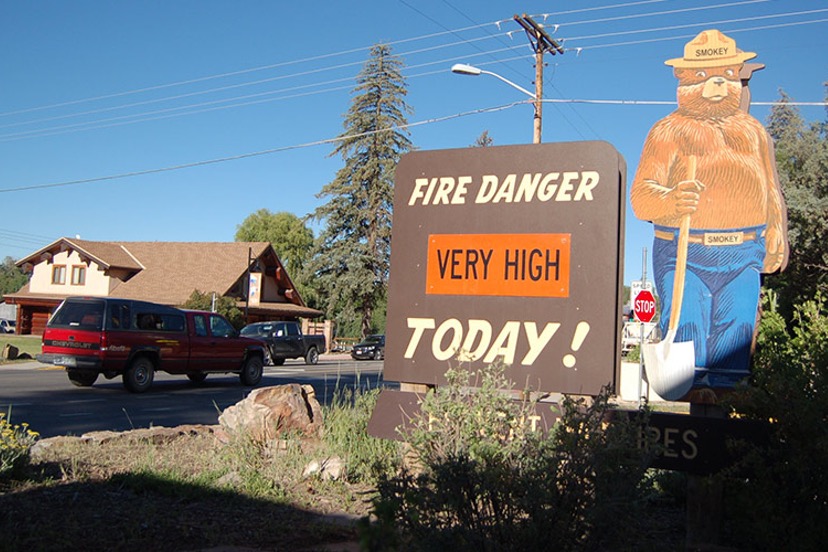By Bill Trimarco
We are all grateful that we had a decent monsoon season this summer, but much of Southwestern Colorado is still in severe drought conditions.
As things continue to dry out and the grasses season and turn brown, we may see wildfires again before the snow flies. Over the last few years we have been seeing wildfires start and burn later into the fall and earlier in the spring. That firewood pile on the deck or next to the house “just for the winter” is not such a good idea anymore.
Most of our local forests have not seen a significant wildfire for over 100 years. That is a lot of time for unchecked growth of potential fuel. Without fire to thin the trees and underbrush, that excessive growth is so close together and reaching from the ground to the tree crowns that huge fires have become the norm. There is no way of predicting how many fires we will have or whether or not one will directly impact our community, but we do have a responsibility to ourselves, our families and our neighbors to make preparations for the inevitable.
Most of the homes lost to wildfire are never directly touched by the flames. No, you did not misread that. Over 80% of the structure loss is caused by the blizzard of embers that blow ahead of the fire, starting spot fires outside of the area that is burning. Those embers can travel over a mile. All it takes is one ember landing on some kindling and you can have a new fire start. If those embers enter your house or find some kindling on or near your house, there is a good chance that your house will catch fire, too.
Here are some tips for Fall preparations.
- Move firewood piles at least 30’ away from structures.
- Make sure there is nothing combustible within 5 feet of the house.
- Clean the leaves and pine needles off of the roof.
- Make sure all attic and soffit vents have 1/8” metal screening.
- Chimneys should have spark arrestors.
- Crawl space vents need 1/8” metal screening.
- Remove all combustibles on, under or near wooden decks.
- Maintain decks and stairs. Dried out wood is more flammable than oil stained or painted wood.
- Remove any combustible plants within 10’ of the house.
- Within 30’ of the house, mow grasses to a 6” height or less.
If you have a second home that you are leaving for a while, put the deck furniture cushions and any coco doormats inside the house.
Remember that any weeds or grasses left in the Fall will be a threat next Spring, too.
If you want to learn what else you can do, check with Wildfire Adapted Partnership at 970-385-8909. Register for their E-News at wildfireadapted.org.
Bill Trimarco is Archuleta County Program Manager, Wildfire Adapted Partnership.

